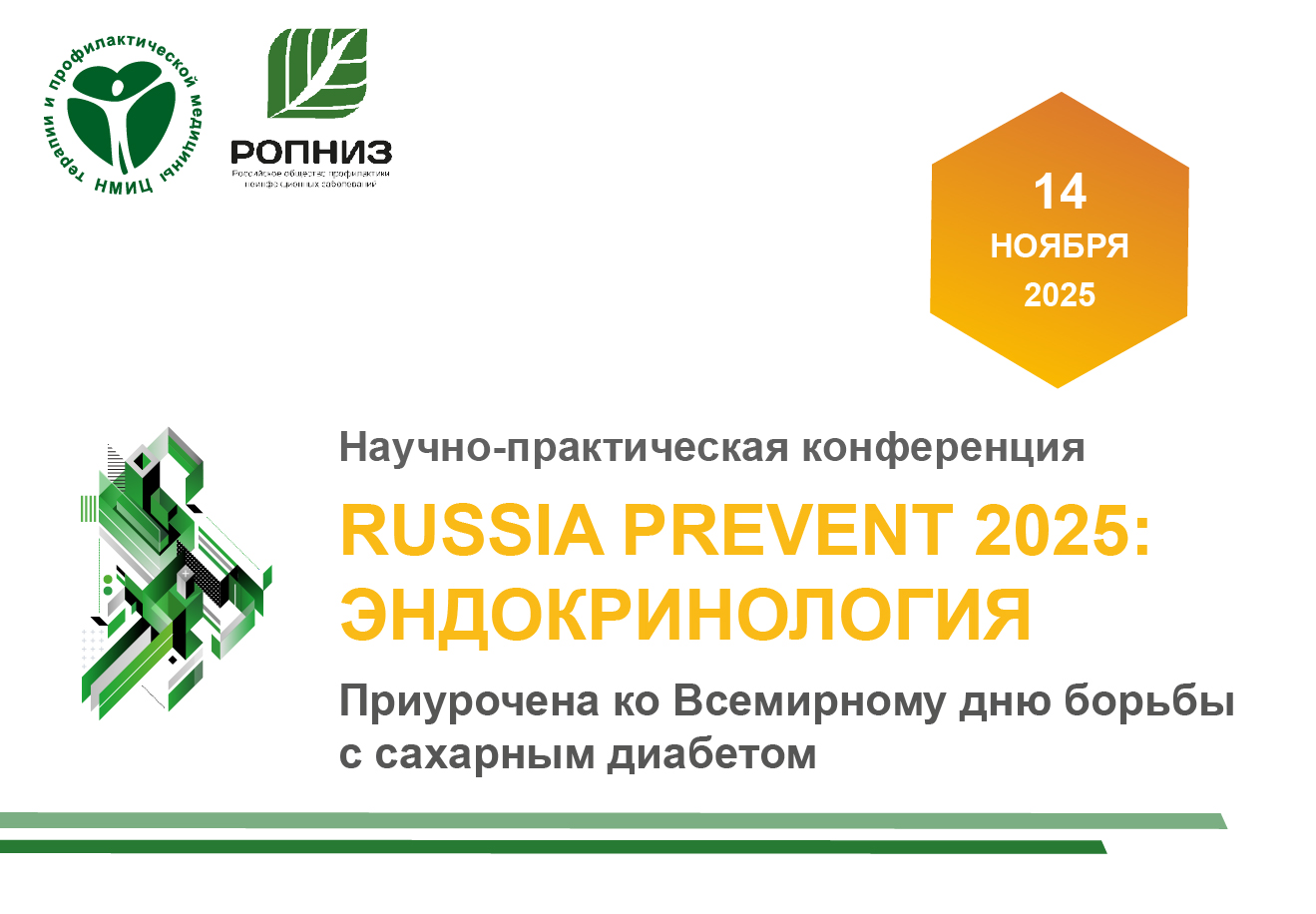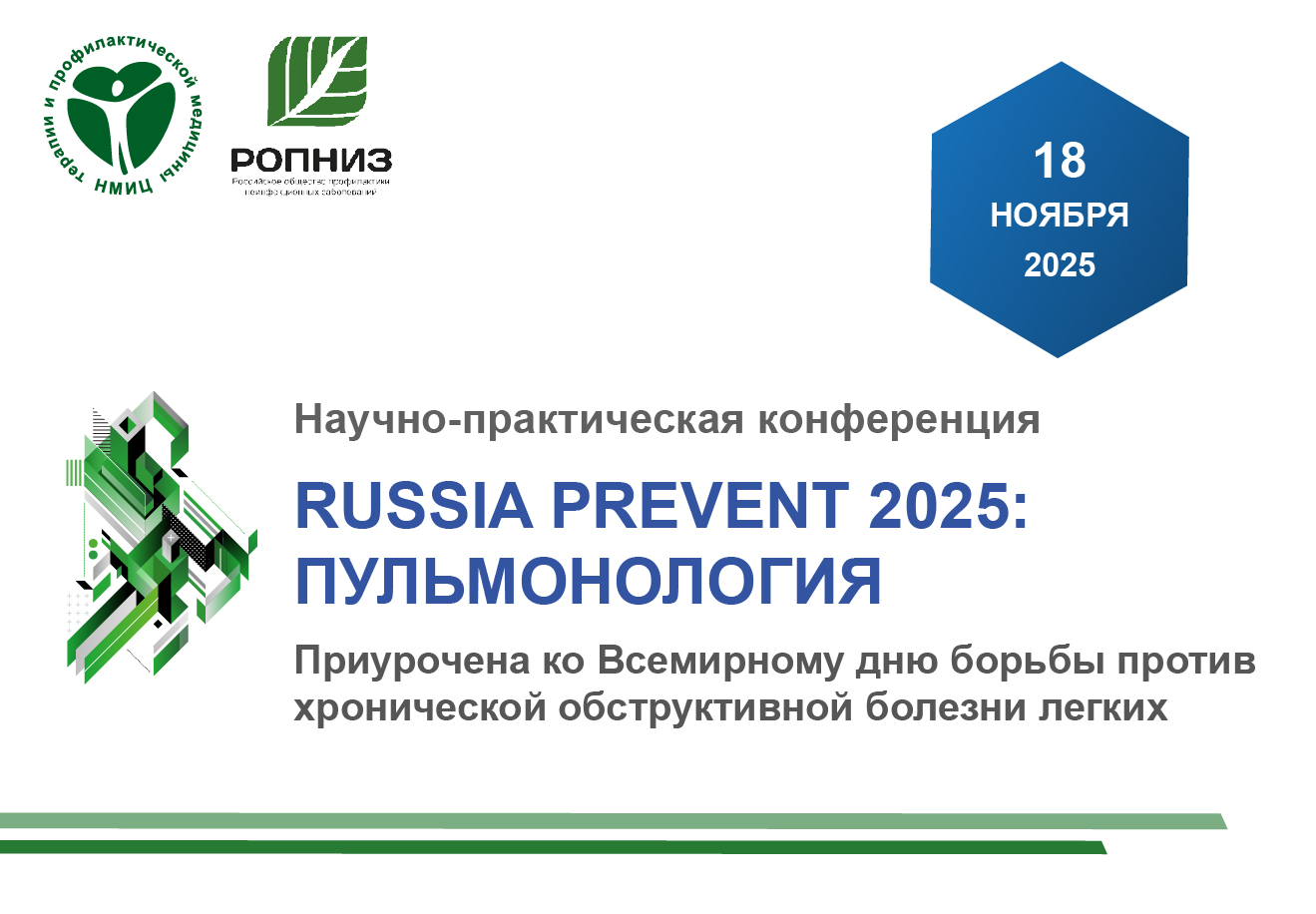Experience with intensive preventive counseling followed by remote monitoring of behavioral risk factors for overweight in patients with noncommunicable diseases
https://doi.org/10.15829/1728-8800-2025-4556
EDN: KMGXJP
Abstract
Aim. To evaluate the effectiveness of digital technologies for intensive preventive counseling followed by remote monitoring of behavioral risk factors (BRF) for overweight in patients with noncommunicable diseases (NCDs) in a real-world practice to validate a management and functional model of interdisciplinary collaboration between a primary care physician and a preventive medicine specialist.
Material and methods. This prospective comparative cohort study was conducted among patients with a BMI ≥25 kg/m2 who underwent a clinical trial followed by remote monitoring of the PFR using the Doctor PM digital platform at healthcare facilities in three Russian regions. Of the 306 patients who completed the initial visit, 250 ended the 6-month follow-up period. A case-control study was conducted to form a study group of 72 patients with NCDs subject to outpatient follow-up and a control group of 72 patients without NCDs, stratified by age. Intensive preventive counseling was conducted with the setting of individualized goals for weight loss and BRF modification, including poor diet and low physical activity. Patients reported their weight, steps, and blood pressure (BP) data every 3 days for 6 months, and also completed a food frequency questionnaire in a mobile app once a week. Statistical analysis included intergroup (Mann-Whitney U-test, chi-square test) and intragroup (Wilcoxon signed-rank test) assessment at a significance level of p<0,05.
Results. Analysis of intergroup differences in dietary habit changes revealed significant differences in the consumption of vegetables, fruits, and grains (p=0,043). By the end of the follow-up period, it was higher in the group with NCDs. This group also showed a decrease in salt intake, while patients without NCDs more often reduced their intake of fats and simple carbohydrates. In the first month, physical activity levels were higher in patients without NCDs (p=0,019). From the second month until the end of the study period, no intergroup differences were observed (p>0,05). The decrease in body weight (BW), body mass index (BMI) and waist circumference (WC) was comparable in both groups as follows: BW -3,95 kg [-1,8; -7,6] (NCDs) and -4,0 kg [-1,0; -7,3] (without NCDs), p=0,34; BMI -1,3 kg/m2 [-0,7; -2,8] and -1,5 kg/m2 [-0,3; -2,8], p=0,35; WC -3,0 cm [0,0; -6,8] and -2,0 cm [0,0; -6,0], p=0,22 (intragroup p for all <0,001). The proportion of those who achieved BW reduction ≥5% was the same — 44,4% in each group (p=1,000). No intergroup differences were found in the frequency of BP data transmissions (p=0,906). Intragroup analysis showed reductions in SBP and DBP in the NCD group (p=0,025; p=0,019) and a reduction in DBP without significant change in SBP in the non-NCD group (p=0,005; p=0,065).
Conclusion. The obtained results indicate comparable effectiveness of organizational technology for intensive preventive counseling with remote monitoring of BRFs using the Doctor PM platform in both patients with NCDs eligible for outpatient monitoring and patients without NCDs. Positive changes in monitored indicators and high patient adherence suggest integration of this technology into outpatient follow-up through an organizational and functional model of interdisciplinary collaboration between general practitioners and preventive medicine specialists. The findings also provide grounds for extending the use of this technology to patients with behavioral risk factors, in particular those with overweight and obesity not eligible for outpatient follow-up, to foster sustained motivation for dietary behavior correction and regular selfmonitoring at earlier risk stages.
About the Authors
A. M. KalininaRussian Federation
Petroverigsky Lane, 10, bld. 3, Moscow, 101990
V. V. Demko
Russian Federation
Petroverigsky Lane, 10, bld. 3, Moscow, 101990
M. S. Kulikova
Russian Federation
Petroverigsky Lane, 10, bld. 3, Moscow, 101990
R. N. Shepel
Russian Federation
Petroverigsky Lane, 10, bld. 3, Moscow, 101990
A. V. Kontsevaya
Russian Federation
Petroverigsky Lane, 10, bld. 3, Moscow, 101990
O. M. Drapkina
Russian Federation
Petroverigsky Lane, 10, bld. 3, Moscow, 101990
References
1. Karamnova NS, Maksimov SA, Shalnova SA, et al. Cardioprotective type of nutrition: prevalence, associations and reserves of prevention. Russian Journal of Cardiology. 2020;25(6):3769. (In Russ.) Кdoi:10.15829/1560407120203769.
2. Drapkina OM, Kontsevaya AV, Kalinina AM, et al. 2022. Prevention of chronic noncommunicable diseases in the Russian Federation. National guidelines. Cardiovascular Therapy and Prevention. 2022;21(4):3235. (In Russ.) doi:10.15829/1728880020223235. EDN: DNBVAT.
3. Nittari G, Scuri S, Petrelli F, et al. Fighting obesity in children from European World Health Organization member states. Epidemiological data, medicalsocial aspects, and prevention programs. Clin Ter. 2019;170:e22330. doi:10.7417/CT.2019.2137.
4. Coupe N, Peters S, Rhodes S, et al. The effect of commitmentmaking on weight loss and behaviour change in adults with obesity/overweight; a systematic review. BMC Public Health. 2019;19(1):816. doi:10.1186/s1288901971853.
5. Aroh AC, Madujibeya I, Asante Antwi H, et al. Examining the Role of Social Determinants of Health on Adherence to Pap Screening Guidelines for US Women Aged 21 to 64 Years: Evidence From the 2022 Health Information National Trends Survey. Cancer Nurs. Published online March 7, 2025. doi:10.1097/NCC.0000000000001481.
6. Kulikova MS, Kalinina AM, Kontsevaya AV, Drapkina OM. Effectiveness of body weight control using remote digital technologies in various organizational models of primary health care. Medical Technologies. Assessment and Choice. 2024;46(1):2636. (In Russ.) doi:10.17116/medtech20244601126.
7. Miller WR. The evolution of motivational interviewing. Behav Сogn Psychother. 2023;51(6):61632. doi:10.1017/S1352465822000431.
8. Drapkina OM, Demko VV, Kalinina AM, et al. Preventive counseling of patients with risk factors for noncommunicable diseases in clinical practice. Analytical review. Cardiovascular Therapy and Prevention. 2024;23(12):4154. (In Russ.) doi:10.15829/1728880020244154. EDN: RNDDQO.
9. Kashutina MI, Kontsevaya AV, Kudryavtsev AV, et al. Preventive counselling of the population on smoking cessation and weight loss according to data from the "Know your heart" study. Human ecology. 2022;(1):518. (In Russ.) doi:10.17816/humeco83703.
10. Boytsov SA, Pogosova NV, Shlyakhto EV, et al. 2023. Cardiovascular prevention 2022. Russian national recommendations. Russian Journal of Cardiology. 2023;28(5):5452. (In Russ.) doi:10.15829/1560407120235452.
11. Ezhov MV, Kukharchuk VV, Sergienko IV, et al. Disorders of lipid metabolism. Clinical Guidelines 2023. Russian Journal of Cardiology. 2023;28(5):5471. (In Russ.) Ежов М. В., Кухарчук В. В., Сергиенко И.В. и др. Нарушения липидного обмена. Клинические рекомендации 2023. Российский кардиологический журнал. 2023; 28(5):5471. doi: 10.15829/1560407120235471. EDN: YVZOWJ.
12. Kalinina AM, Eganian RA, Gambarian MG, et al. Effective prophylactic counseling in patients with chronic noncommunicable diseases and risk factors: counseling algorithms. Part 2. Profilakticheskaya medicina. 2013;16(4):138. (In Russ.) EDN: RBMGQH.
13. Drapkina OM, Kontsevaya AV, Kalinina AM. Organizational aspects of outpatient management of comorbid patients. М.; 2020. 144 p. (In Russ.)
14. Son IM, Kryakova MYu, Menshikova LI, et al. Opinion of specialists and patients on the organization of primary health care provision and proposals for its improvement. Current problems of health care and medical statistics. 2023;(4):102748. (In Russ.) С
15. Kulikova MS, Gorny BE, Kontsevaya AV, et al. Effectiveness of remote technologies for the control and selfcontrol of overweight and obesity in primary healthcare patients. Russian Journal of Preventive Medicine. 2021;24(10):2431. (In Russ.) oi:10.17116/profmed20212410124.
16. Kolosnitsyna MG, Kulikova OA. Overweight: socioeconomic factors and consequences. The Demographic Review. 2019; 5(4):92124. (In Russ.) doi:10.17323/demreview.v5i4.8664.
17. Kalinina AM, Savchenko DO, Voshev DV, et al. Primary health care, public health and health care organization. Handbook of concepts and terms. Spravochnik ponyatij i terminov. M.: ROPNIZ, OOO "SiliceyaPoligraf"; 2023. 76 p. (In Russ.) doi:10.15829/ROPNIZk12023. EDN: EDXLEM.
18. Chatterjee A, Prinz A, Gerdes M, et al. Digital Interventions on Healthy Lifestyle Management: Systematic Review. J Med Internet Res. 2021;23(11):e26931. doi:10.2196/26931.
19. Kulikova MS, Kalinina AM, Eganyan RA, et al. Use of mobile health tools in controlling overweight and dietary habits: results of a Russian multicenter randomized trial. Russian Journal of Preventive Medicine. 2022;25(12):4654. (In Russ.) doi:10.17116/profmed20222512146.
20. Kalinina AM, Kulikova MS, Pustelenin AV, et al. Individual indepth preventive counseling and remote control of the weight loss process using telemedicine technologies (digital platform "Doctor PM" — version 1.0, module "Overweight"). Methodological recommendations. M.: ROPNIZ, OOO "SiliceyaPoligraf"; 2023. 44 p. (In Russ.) doi:10.15829/ROPNIZk22023. EDN: YIOTLG.
21. Kulikova MS, Eganyan RA, Kalinina AM, et al. Validity of food frequency questionnaire as a tool for remote monitoring of excess body weight reduction using digital technology. Russian Journal of Preventive Medicine. 2023;26(6):617. (In Russ.) doi:10.17116/profmed20232606161.
22. Efanov AYu, Kremneva LV, Safiullina ZM, et al. The role of modern technologies in dispensary observation of patients with arterial hypertension in the Tyumen region included in the register of patients with chronic noncommunicable diseases. Cardiovascular Therapy and Prevention. 2017;16(5):4651. (In Russ.) doi:10.15829/17288800201754651.
23. Nazarov AM, Tolpygina SN, Bolodurina IP. Analysis and evaluation of healthcare delivery to patients with coronary artery disease using PCbased medical data. Cardiovascular Therapy and Prevention. 2020;19(6):2546. (In Russ.) doi:10.15829/1728880020202546.
24. Shishkin SV, Sheiman IM, et al. Russian healthcare: development prospects. Report of the Higher School of Economics. Doklad NIU VSHE. M.: Izd. dom VSHE; 2024. 60 p. (In Russ.) ISBN: 9785759840466 (ebook).
Supplementary files
What is already known about the subject?
- Preventive counseling and remote monitoring of behavioral risk factors can promote sustainable weight loss and lifestyle modification in patients with noncommunicable diseases (NCDs), but their effectiveness in primary care requires further study.
What might this study add?
- For the first time in Russia, the comparable effectiveness of intensive preventive counseling followed by remote monitoring for patients with and without NCDs has been confirmed in real-world practice.
- Patients with NCDs have been found to demonstrate high adherence to remote monitoring, as evidenced by significant changes in the monitored parameters.
- The data obtained confirm the rationale of developing a management and functional model integrating intensive preventive counseling and remote monitoring into clinical follow-up through interdisciplinary collaboration between a local physician and a preventive health specialist.
Review
For citations:
Kalinina A.M., Demko V.V., Kulikova M.S., Shepel R.N., Kontsevaya A.V., Drapkina O.M. Experience with intensive preventive counseling followed by remote monitoring of behavioral risk factors for overweight in patients with noncommunicable diseases. Cardiovascular Therapy and Prevention. 2025;24(9):4556. (In Russ.) https://doi.org/10.15829/1728-8800-2025-4556. EDN: KMGXJP

























































